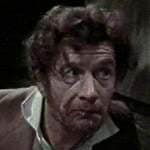Frankenstein
Critique • Text • Frankenstein at the movies
 Frontispiece, first illustrated edition 1831
Frontispiece, first illustrated edition 1831Original title
Frankenstein; or, The Modern Prometheus
First publication
1818
Literary form
Novel
Genre
Literary, science fiction, horror
Writing language
English
Author's country
England
Length
Approx. 78,000 words

Peter Cushing returns to create new monsters, starting with The Revenge of Frankenstein.
He's baaack—again and again
The Revenge of Frankenstein (1958): Film, 90 minutes; directors Terence Fisher; writer Jimmy Sangster; featuring Peter Cushing, Michael Gwynn, Francis Matthews, Eunice grayson
The Evil of Frankenstein (1964): Film, 84 minutes; director Freddie Francis; writer John Elder; featuring Peter Cushing, Kiwi Kingston, Peter Woodthorpe
Frankenstein Created Woman (1967): Film, 86–92 minutes; director Terence Fisher; writer John Elder; featuring Peter Cushing, Suysan Denberg, Thorley Walters, Robert Morris
Frankenstein Must be Destroyed (1969): Film, 98–101 minutes; director Terence Fisher; writer Bert Batt; featuring Peter Cushing, Freddie Jones, Simon Ward, Veronica Carlson, Thorley Walters
The Horror of Frankenstein (1970): Film, 95 minutes; director Jimmy Sangster; writer Jeremy Burnham, Sangster; featuring Ralph Bates, Kate O'Mara, Veronica Carlson, Dennis Price
Frankenstein and the Monster from Hell (1974): Film, 99 minutes; director Terence Fisher; writer John Elder; featuring Peter Cushing, Shane Briant, Madeline Smith, David Prowse
The successful British reboot of the Frankenstein franchise in 1957 not only made stars of Peter Cushing and Christopher Lee but also led to several sequels, starting with The Revenge of Frankenstein (1958) with the same director, Terence Fisher, and same writer, Jimmy Sangster, who ended up writing almost all Hammer's Frankenstein and Dracula films.
Cushing returns as the doctor but without his friend Lee as the monster for the sequels. In the first one Victor has cheated death, which seemed inevitable at the end of The Curse of Frankenstein, and now continues with his grisly experiments.
In fact, the original monster is not resurrected. Unlike the Americans, when the Brits kill off a monster at the end of a film, it stays dead. In the subsequent Frankenstein films in this series, the good doctor works on new re-animation projects.
In this movie, the closest thing to a monster is Frankenstein's hunchbacked assistant Karl (yes, the stereotype of the mad scientist's assistant is revived), whose brain is transplanted into a healthy body. The experiment goes horribly wrong, of course.
The film, however, goes quite right and is one of the most acclaimed of the Hammer horror films, alongside Curse.
After a break, Fisher made four more Frankenstein films with Cushing for Hammer studios: The Evil of Frankenstein (1964), Frankenstein Created Woman (1966), Frankenstein Must be Destroyed (1969), Frankenstein and the Monster from Hell (1974).
Of this batch, the 1969 film is considered the best and the 1964 flick—in which the "monster" is a beautiful young woman's body containing her lover's soul bent on revenge against some local dandies—is the worst, possibly the worst film ever made by Hammer Films.
The studio also threw in another one in 1970, Horror of Frankenstein, without Fisher or Cushing, but the attempt to introduce a young, hip Frankenstein flopped.
— Eric
Critique • Text • Frankenstein at the movies
1931, 1935, 1939, 1942–1948, 1957, 1958–1970, 1973–1996, 1994, 2014


